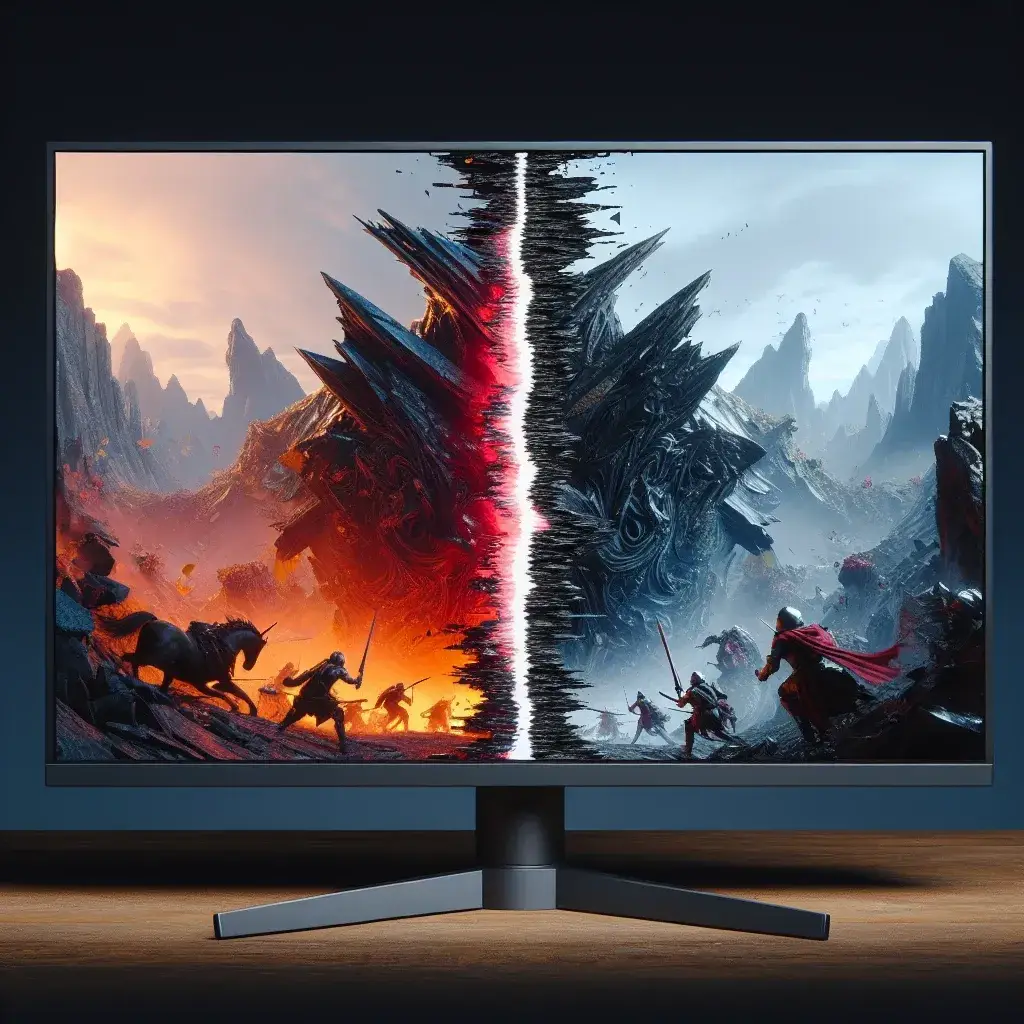What is screen tearing and how can it be fixed on an LCD monitor?

Screen tearing is a common visual artifact experienced by gamers and professionals who use LCD monitors. It occurs when the monitor displays information from multiple frames in a single screen draw, leading to a disjointed or ‘torn’ image. Understanding the root causes of screen tearing and knowing how to fix it can significantly enhance your viewing experience.
Understanding Screen Tearing
Screen tearing happens due to the mismatch between the monitor's refresh rate and the frame rate of the content being displayed. In simpler terms, if the GPU is producing frames faster or slower than the monitor can display them, it leads to tearing.
Causes of Screen Tearing
- Unsynchronized refresh rates
- High frame rates
- Slow monitor response times
Identifying Screen Tearing
Screen tearing is most noticeable during fast-paced scenes or quick movements in video games or videos. The image appears split into two or more parts, with a visible line where the tears occur.
Common Fixes for Screen Tearing
There are several methods to address screen tearing, ranging from software-based solutions to hardware upgrades.
V-Sync
Vertical Synchronization (V-Sync) is a setting available in most video games that caps the frame rate to match the monitor's refresh rate. This eliminates screen tearing but may introduce input lag.
G-Sync and FreeSync
These technologies, developed by NVIDIA and AMD respectively, dynamically adjust the monitor's refresh rate to match the frame rate of the GPU. This provides a seamless experience without tearing or stutter.
Fast Sync and Enhanced Sync
Advanced solutions like NVIDIA's Fast Sync and AMD's Enhanced Sync offer minimal input lag while reducing screen tearing, making them popular options among gamers.
Frame Rate Caps
Setting a maximum frame rate limit in your GPU's control panel or in-game settings can also help in reducing screen tearing.
Hardware Considerations
- Monitor Refresh Rate: Higher refresh rates (120Hz, 144Hz) can help in reducing tearing.
- Graphics Card: A better GPU can manage frame rates more efficiently.
- Cables: Using high-quality DisplayPort or HDMI cables ensures a steady signal.
Conclusion
Screen tearing is an annoying issue that can disrupt your visual experience. Thankfully, with the numerous solutions available today, ranging from V-Sync to advanced technologies like G-Sync and FreeSync, you can significantly reduce or eliminate screen tearing on your LCD monitor. By understanding the cause and implementing the appropriate fixes, you can enjoy a smooth and immersive display experience.
